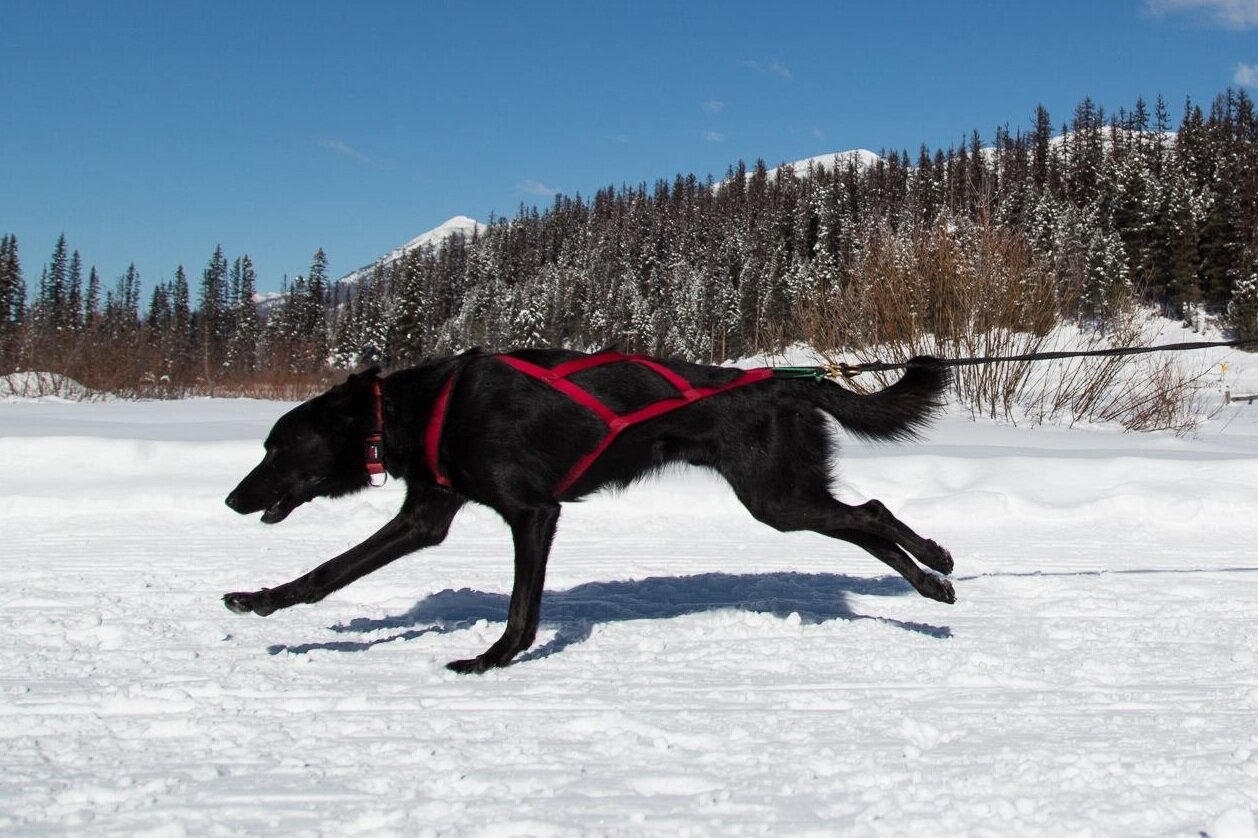Harness Type & Fitting
There are several different kinds of harnesses out there, but the most important thing in harness selection is to ensure the harness fits your dog.
Follow the instructions on the manufacturer’s website carefully and ensure you have a ribbon measurement tape to begin.
To get started, most begin with an x-back harness as these readily available and affordable even with customization options for non-traditional breeds.
If you notice that your dog’s gait (how they move/run) seems to be impacted by the harness after training a few times, you may choose a different type of harness to better compliment their body type.
Canadog offers a 3 part series on YouTube, which will walk you through the different harness types and fits. The first video is linked to the right.

Photo from Wendy Devent
X-Back Harness
Point of attachment even with the dog’s back
Most popular mushing harness and where most beginners start.
Purchase at:
Open back harnesses are similar to the x-back design but lack the ‘x’ over the back that may be uncomfortable on dogs with back sensitivity.
Named after the Iditarod musher who made these harnesses popular, this is a ‘collared’ harness which puts most of the pulling pressure on the dogs shoulders - side traces and spreader bar ensure the line of pull is straight from the shoulders to the attachment point. Designed to reduce crabbing and minimize harness rub, plus free a dog’s hips from downward pressure.
Non-Stop’s take on the Seavey harness, this pulling harness is designed to put minimal pressure on the dog’s back and hips. Best used with a load where the pulling center is low, such as a sled.
A very popular harness due to its versatility - the pulling center is ‘above’ the dog and the design focuses on freedom of motion and minimal breath constraint.
Designed to maximally distribute the weight across the dog’s chest and shoulders without restricting the limbs or putting pressure on the back. This is a popular harness on many performance teams.
This harness does not extend all the way down the back as the x-back or open back harnesses too, which relieves hip and back pressure on the dogs. As per the musher Shelby Morang, “I’ve been really happy with them and never have any harness run issues which I’ve had with x backs. Also my crabber hasn’t crabbed since making the switch.”
A half harness design that can be modified upon ordering, this harness was originally designed with bikejoring or scootering in mind due to the attachment point allowing for a steeper angle between dog and handler.
Typically used for pulling a cart, this style of harness has multiple adjustable straps to accommodate the shafts of the cart it will be attached to.
Also called half-back, shorty or shoulder harness can be used for mushing as well as other dog activities. Preferred by some for bikejoring/skijoring as the half-back design accommodates a steeper pull angle.
A well padded and highly adjustable harness that is primarily for walking - not intended for pulling use.









